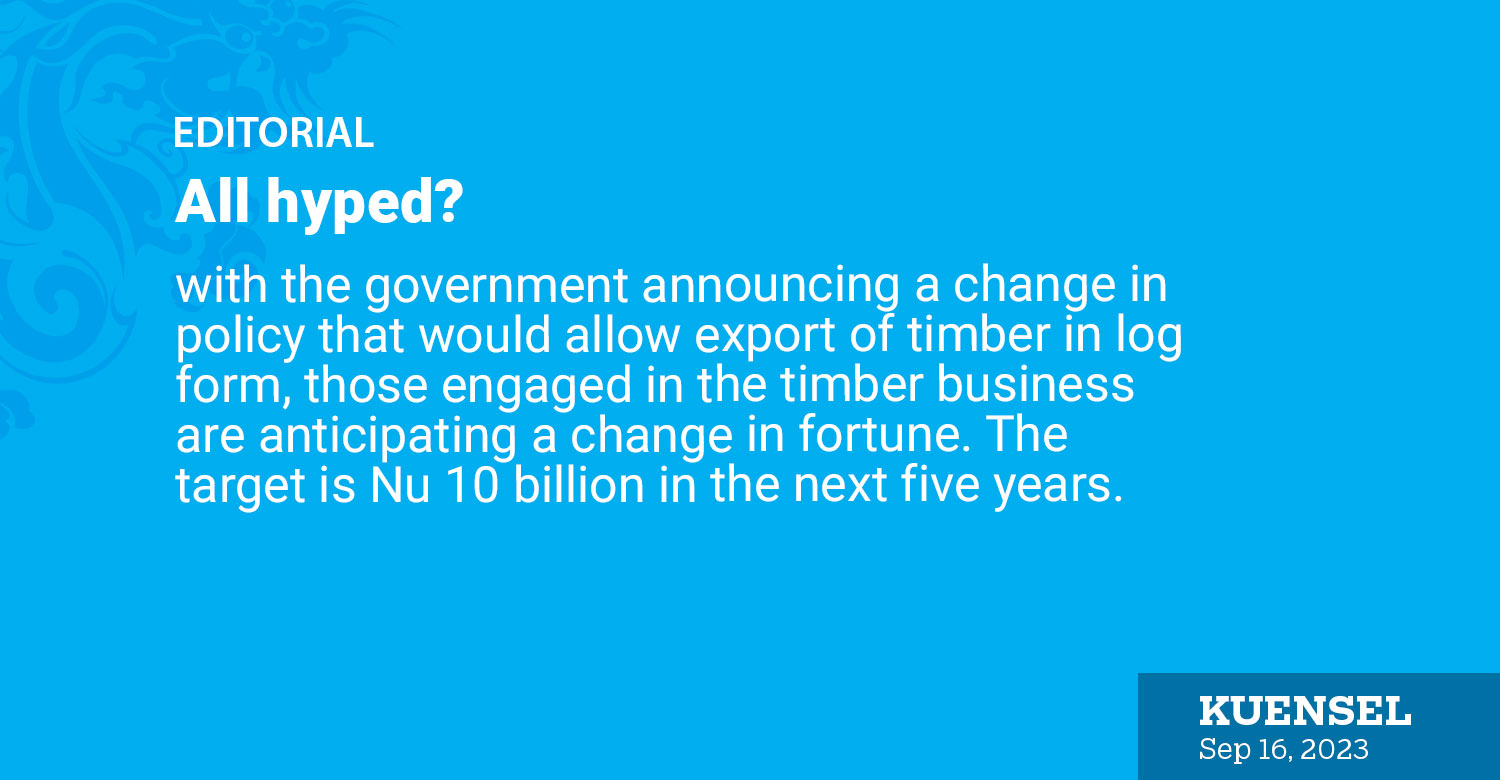With the government announcing a change in policy that would allow export of timber in log form, those engaged in the timber business are anticipating a change in fortune. The target is Nu 10 billion in the next five years.
Bhutan is rich in forest resources. If we can generate revenue from wood and wood products, or even offset the ballooning import bill, we should indeed explore these possibilities. The wisdom and the environment-friendly policies of our past leadership have ensured that we have protected our natural resources, even when we desperately needed money to fund our development projects.
Many nations, including our Himalayan neighbours, made money from forest resources to the extent that they shaved off entire forest cover for the greed of money. We preserved ours well. Considering the change in policy, the time may have come to derive economic returns from our forest resources.
However, it is easier said than done. How do we accomplish it? Do we have enough forest resources? Do we have the right trees or timber to cater to demands? Can we be competitive? There are never-ending questions.
Recent data reveal a declining growing stock of our forest. It has already declined from an estimated 1,001 million cubic metres (m3), with an average growing stock per hectare of 261 m3 to 759 million m3, with an average of 283.65 m3 per hectare. This still may be a lot to export, but the other question is how do we do it in an open market where timber in various shapes and sizes is exported in containers on the back of ships to every market worldwide.
This is why forest-rich Bhutan imports timber from as far as Indonesia and China. In just 2022, we imported Nu 4.28 billion worth of wood and wood-based products. The other daunting problem is being competitive in the market. Even if there are enough trees to be felled and sold, the cost of harvesting and transporting them to the nearest sea or land port is going to make our products expensive. Have we conducted a market study?
Given our strict environmental rules, timber has to be harvested in the best eco-friendly manner. In other words, roads for logging will be restricted and demand for sustainable forest product harvesting technology will be a requirement. All this will drive the price higher making it expensive and uncompetitive.
Besides the announcement of a Nu 10B timber project, market analysis details are scant. Neighboring Assam and West Bengal could potentially consume all our exports, but there are regulations on importing natural resources. Have we looked into this? Forest resources are considered hazards if they do not meet export standards. Only the black and illegal market would turn a blind eye to such regulations.
Meanwhile, going by our import bills, there is a significant demand for wood and wood-based products in the country. Contractors and those building houses are complaining of unaffordable timber prices. Some rightly believe that lowering the cost of timber could bring down cost of construction and, therefore, make housing more affordable. It would be ironic to see some companies make money from export of timber and local industries see a dearth of timber.
Forest-rich Bhutan should benefit from the natural resources endowed upon us. The benefit should be distributed equitably. A better idea could be to design our buildings with greater reliance on wood instead of the expensive steel, bricks and concrete. Our traditional buildings, mostly made from wood and mud, have lasted longer than the hype of unique architecture.


